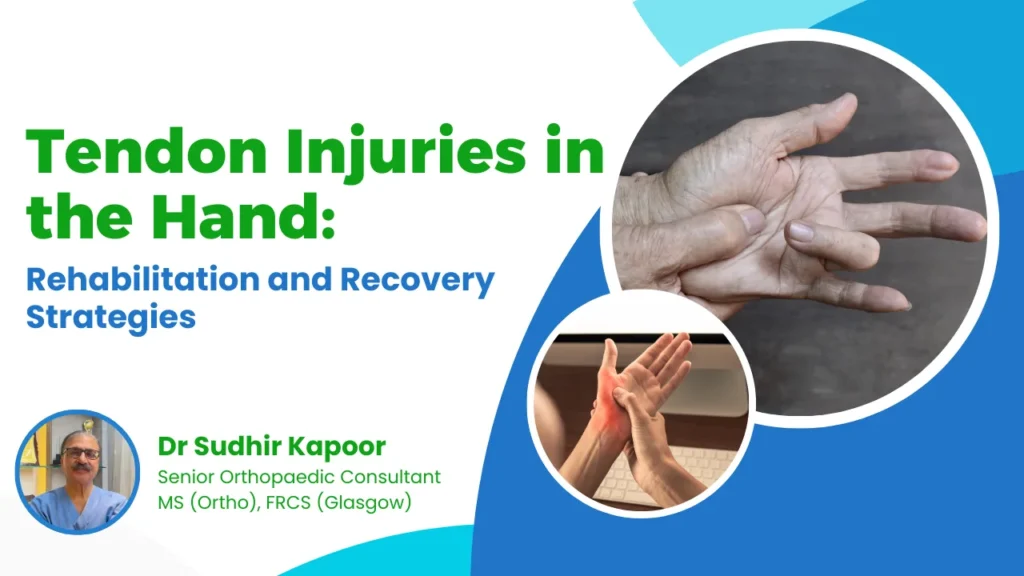Tendon injuries in the hand can significantly impact daily activities, affecting the ability to grip, hold, and perform intricate tasks. Tendons are fibrous connective tissues that attach muscles to bones, allowing movement and flexibility. Injuries to these tendons can arise from trauma, repetitive strain, or underlying health conditions. Understanding the nature of tendon injuries and the rehabilitation strategies available is crucial for effective recovery.
What Causes Tendon Injuries in the Hand?

Tendon injuries can occur due to various reasons, including:
- Acute Injuries: Sudden trauma from falls, accidents, or sports activities can lead to tendon ruptures or lacerations.
- Repetitive Strain: Continuous, repetitive motions, such as typing or playing musical instruments, can cause tendinitis or tenosynovitis, leading to inflammation and pain.
- Underlying Conditions: Conditions like rheumatoid arthritis, diabetes, or Dupuytren’s contracture can predispose individuals to tendon injuries due to joint inflammation or tissue thickening.
Symptoms of Tendon Injuries
Recognizing the symptoms of tendon injuries is essential for early intervention. Common signs include:
- Pain and Tenderness: Pain is often felt along the tendon, especially during movement.
- Swelling: The affected area may become swollen and tender to touch.
- Stiffness: Difficulty in moving the affected fingers or hand, particularly in the morning or after prolonged inactivity.
- Weakness: A noticeable decrease in grip strength or difficulty in performing tasks requiring fine motor skills.
- Snapping or Clicking Sensation: In some cases, patients may experience a snapping or clicking sensation during movement, indicating tendon involvement.
Rehabilitation Strategies for Tendon Injuries
Recovering from tendon injuries requires a comprehensive rehabilitation program tailored to the individual’s needs. Here are effective strategies to facilitate recovery:
1. Initial Care and Rest
- Immediate Care: Following an injury, it’s essential to apply the R.I.C.E. method—Rest, Ice, Compression, and Elevation—to reduce pain and swelling.
- Avoid Strain: Avoid activities that exacerbate the injury, and consider using a splint or brace to immobilize the hand and promote healing.
2. Physical Therapy
- Range of Motion Exercises: Once the initial pain and swelling subside, a physical therapist can guide you through gentle range-of-motion exercises to prevent stiffness and improve flexibility.
- Strengthening Exercises: Gradual strengthening exercises can help restore grip strength and function. This may include resistance bands or hand therapy putty.
- Manual Therapy: Hands-on techniques, such as soft tissue mobilization, can help alleviate pain and improve mobility.
3. Pain Management
- Medications: Over-the-counter pain relievers, such as NSAIDs (ibuprofen or naproxen), can help manage pain and inflammation.
- Corticosteroid Injections: In cases of severe inflammation, a healthcare provider may recommend corticosteroid injections to provide relief.
4. Occupational Therapy
- Activity Modification: An occupational therapist can assess your daily activities and recommend modifications to reduce strain on the injured tendon.
- Adaptive Equipment: Using tools and devices designed to assist with daily tasks can help minimize stress on the hand during recovery.
5. Surgical Intervention
If conservative treatments do not yield satisfactory results or if the injury is severe, surgical intervention may be necessary. Common surgical options include:
- Tendon Repair: In cases of complete tendon ruptures, surgical repair may be required to reattach the tendon to the bone.
- Tenolysis: This procedure involves removing scar tissue that may be restricting tendon movement and causing pain.
Consulting a Specialist
If you suspect a tendon injury in your hand, it’s crucial to consult a healthcare professional. Dr. Sudhir Kapoor, a respected Orthopaedic surgeon in Delhi, specializes in treating hand injuries and offers a patient-centered approach to care. With over 40 years of experience, he can provide personalized rehabilitation plans to aid your recovery.
Conclusion
Tendon injuries in the hand can pose significant challenges, but with proper rehabilitation and recovery strategies, individuals can regain their strength and functionality. Early recognition and intervention are key to successful recovery. If you’re dealing with a tendon injury, consider consulting an expert like Dr. Sudhir Kapoor to discuss the best course of action and begin your journey toward recovery.





